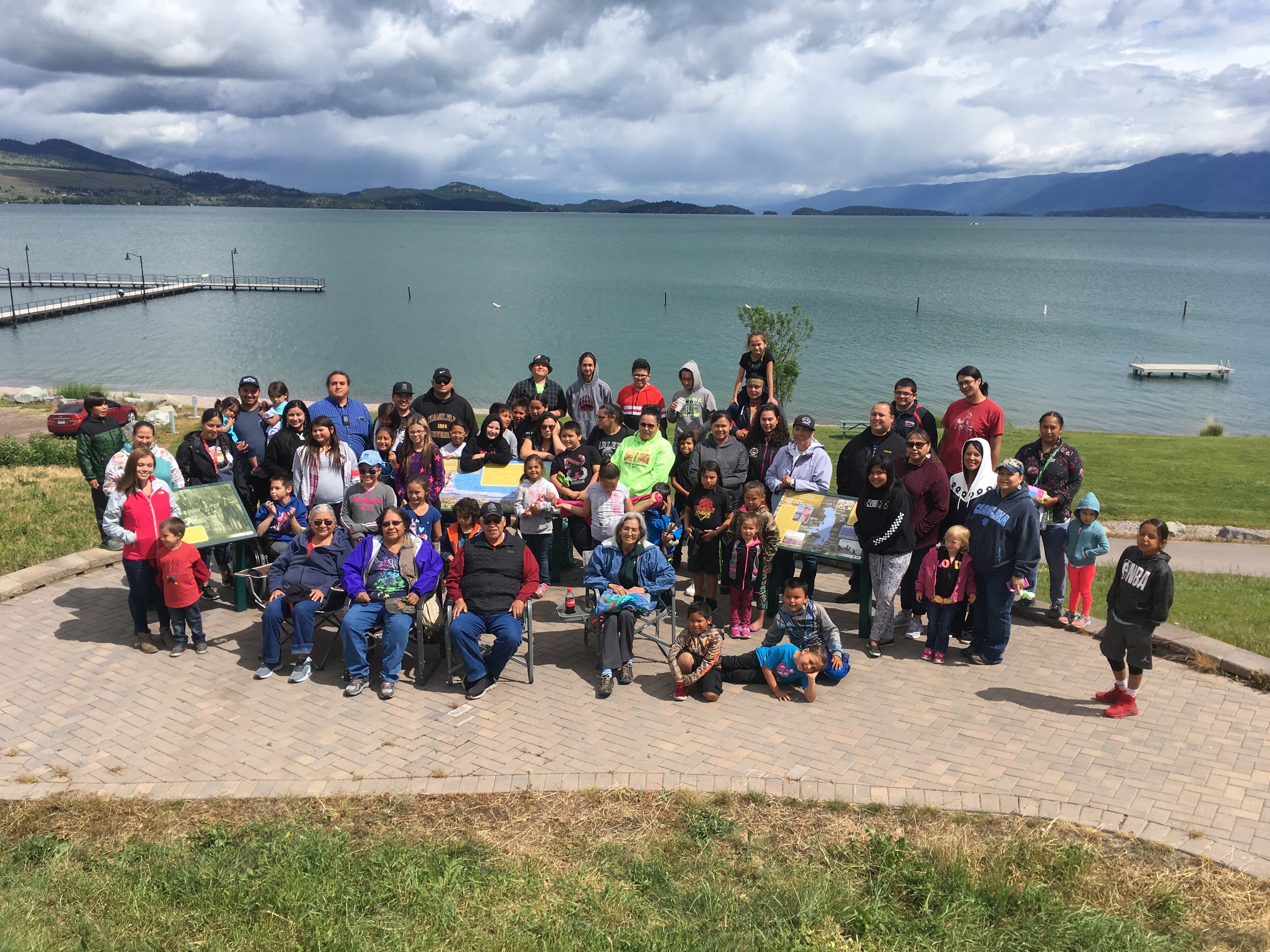Indigenous Studies Seminar: "Sk͏ʷsk͏ʷstúlex͏ʷ | Names Upon the Land: The Salish-Kalispel Ethnogeography Project" with Thompson Smith

The sixth Indigenous Studies Seminar of the 2020-2021 year will be held on Friday, April 16, 2021 at 3:30 p.m. on Zoom.
The speaker will be Thompson Smith, who will present a brief overview of the Séliš-Ql̓ispé (Salish-Kalispel) Ethnogeograp
Thompson is the Coordinator of History and Ethnogeography Projects for the Séliš-Ql̓ispé Culture Committee (SQCC), a department of the Confederated Salish and Kootenai Tribes (CSKT). He is tasked with a wide range of SQCC projects in tribal history and geography, including books, articles, web-based materials, signs and historical markers (more than 80 are up as of 2020), museum exhibits, pamphlets and brochures, and presentations. SQCC books include The Salish People and the Lewis and Clark Expedition (University of Nebraska Press, revised ed. 2019). Smith served as historian for three CSKT projects blending science, history, and culture, Fire on the Land: Science, History, and Culture of Fire and Native People in the Northern Rockies, Explore the River: Bull Trout, Tribal People, and the Jocko River (both published as interactive DVDs by the University of Nebraska Press) and the “Living Landscapes” climate education project (digitally published in 2019 by the Confederated Salish and Kootenai Tribes, the National Aeronautics and Space Administration (NASA), and Salish Kootenai College. All three projects are now accessible online at http://fwrconline.csktnrd.org.
To attend the seminar, please register via Zoom. While there will be no pre-circulated paper, we encourage you to explore the links included in Thompson's bio and the project description below.
The Library & Museum's Indigenous Studies Seminar Series serves scholars and researchers working on projects in or aligned with Native American and Indigenous Studies. Questions about the series may be directed to Adrianna Link, Head of Scholarly Programs, at [email protected].
---------------
"Sk͏ʷsk͏ʷstúlex͏ʷ | Names Upon the Land: The Salish-Kalispel Ethnogeography Project"
For almost half a century, the Séliš-Ql̓ispé Culture Committee has systematically documented the place-names of the Séliš (Salish or “Flathead”) and Ql̓ispé (upper Kalispel or “Pend d’Oreille) people through deep work in oral history recordings, painstaking archival research (including extensive work in materials from the American Philosophical Society), and countless days of fieldwork with tribal elders. The project encompasses aboriginal territories some 500 miles wide on both sides of the Continental Divide in what is now the state of Montana (and parts of northern Idaho and eastern Washington). Some 1500 place-names will be the detailed in the forthcoming multi-volume atlas, Sk͏ʷsk͏ʷstúlex͏ʷ: Names Upon the Land. But the culture committee doesn’t want this material to gather dust on a shelf. The larger aim of the project is to return the place-names to daily life and to the land itself in public spaces — and that is already being accomplished, through dozens of interpretive signs, posters, highway signs, CDs and pamphlets, and web-based materials.
You can learn more about the Séliš-Ql̓ispé Ethnogeography Project here. This illustrated, footnoted, 30-page booklet providing a detailed overview of the project, our methodology, and what we are producing. Click on the "pop-out" icon at upper right to go to a larger display that is zoomable.
